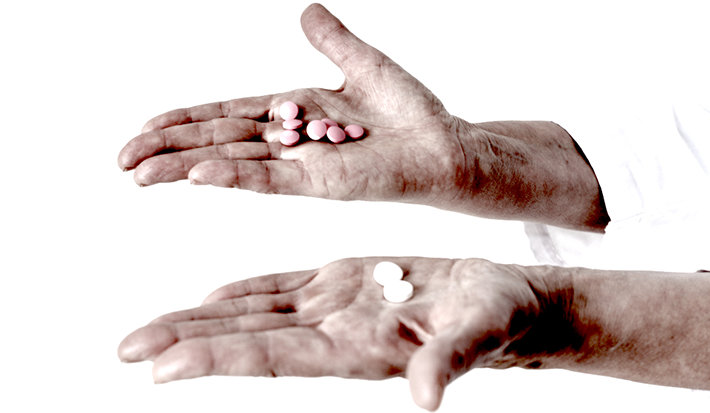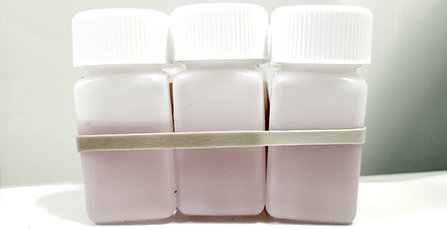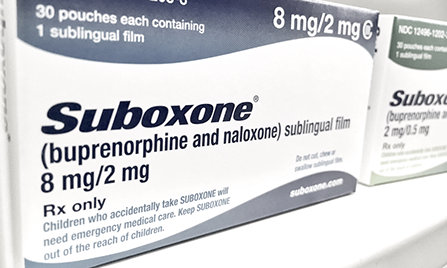Why “Anti-Addiction” Drugs Don't Work

Can you imagine having to take a drug so that you don’t have to take another drug? It seems a little silly, doesn’t it? Why not just avoid the first drug in the first place? Why do you have to take something else so as not to take the original drug? Yet seemingly ludicrous as it is, that is the central concept behind medication-assisted therapy (or medication-assisted treatment) also known as MAT.
MAT has appeared in the last few years as being the “latest and greatest” in how we are going to tackle the addiction epidemic that our nation is mired in. Unfortunately, all MAT ends up doing is keeping addicts hamstrung, keeping them dependent on something (even if that something is legal) and someone (even if it’s a doctor instead of a dealer). In short, medication-assisted therapy simply does not work.
At least, it does not work in the context of helping addicts to break free from dependencies on all substances. Is that no longer the goal that we are shooting for?
What Is Medication-Assisted Therapy?
Medication-assisted therapy refers to the use of “anti-addiction drugs” which are essentially pharmaceutical medicines that are supposed to help people avoid taking other drugs. The two most common drugs used in MAT are:

- Methadone. Methadone is an opioid pain reliever. While the drug is used as a “tool” in treatment for addiction, it’s also used on chronic pain patients for its pain relieving characteristics. The effects of methadone are not as potent as other opioids, so the drug is not considered “as mind-altering” as other drugs. However, it is still addictive, and patients can and do form both physical and psychological dependencies to it.

- Suboxone. Suboxone is a combination of buprenorphine and naloxone. Buprenorphine is a “partial opioid agonist” meaning that it has some of the characteristics and traits of opioids, but not all of them. Naloxone is an “opioid antagonist,” which means it serves to counteract the effects of opioids. Suboxone seeks to combine buprenorphine and naloxone to provide pain relief and to prevent the patient from going into opioid withdrawals. While Suboxone is generally thought to be not quite as risky as methadone, Suboxone also contains the potential for creating addiction in patients who take it.
A Flawed Plan
When the idea for medication-assisted therapy first went public, two erroneous assumptions went with it. One was that recovering addicts did not need to break free from all substances to achieve a full recovery, and the other was that MAT patients would not eventually become addicted to the very medicines that were supposed to help them.
But let’s take another look at the definitions for methadone and buprenorphine. These are opioids, ladies and gentlemen. Given to a recovering opioid addict, they will eventually become a substitute drugs—something the individual takes because they can’t (or won’t) take other opioids.
Yes, it’s great that the individual is no longer shooting IV heroin in the streets, but as long as the individual is still dependent on something, they are not yet entirely clean from drugs.
The value that comes with breaking free from dependencies on all drugs cannot be stressed enough. Are you clean and sober if you still have to take an addictive drug every day?
The Opioid Epidemic – Why People Thought That MAT Might Be a Good Idea
The opioid epidemic has undoubtedly taken its toll. It is a cruel, nationwide crisis that has wreaked havoc on our nation for two decades. We face what might be one of the worst if not the worst drug problems that our country has ever known as a result of the opioid crisis.
According to the National Institute on Drug Abuse, 130 people in the U.S. die every day from opioid overdoses. It’s a problem which costs us tens of billions of dollars per year and tens of thousands of lives. With a problem that big, and with MAT drugs being designed to treat opiate addicts, it’s almost understandable why the American people would want to take these pills as a “fast solution.”
But let’s take a look at what started the opioid epidemic. According to NIDA, “In the late 1990s, pharmaceutical companies assured the medical community that patients would not become addicted to prescription opioid pain relievers, and healthcare providers began to prescribe them at greater rates. This subsequently led to widespread diversion and misuse of these medications before it became clear that these medications could indeed be highly addictive.”
NIDA goes on to talk about how the increase in opioid misuse led to skyrocketing overdose rates with 47,000 people dying from opioids in 2015 alone. And the problem only gets worse from there. Every year, the opioid epidemic touches more lives. And when that happens, people die.
The irony does not escape us that the very same pharmaceutical organizations that made the drugs which got us into this predicament are now making the drugs which are supposed to get us out of the mess. Doesn’t this seem suspicious?
Would you drink an “antidote” given to you by someone who poisoned you? Would you allow the man who stabbed you in the back to bandage your wound? Would you shake the hand of the person who took your home, family, life’s savings, and career from you? Certainly not. So why would we trust pharmaceutical organizations and their “anti-addiction” drugs?
A Drug-Free Life Is the Best Life

The drug-free life is the best life. This is the crème de la crème in addiction recovery. Breaking free from all dependencies is the supreme goal. It is what everyone who struggles with addiction should be working towards.
A lifetime of “maintenance” on MAT drugs is no kind of life for anyone. These drugs are themselves addictive. They produce withdrawal symptoms when one tries to come off of them. They can be mind-altering when misused, and patients will spend the rest of their lives in fear that they will become addicted to them.
Why are we copping out? Why are we giving up on the valuable dream that is a lifetime of recovery and sobriety from all substances?
Yes, the addiction crisis is severe and addicts are having a difficult time of it. But now’s not the time to give up on recovery. In fact, it’s the time to fight harder for it.
Sources:
- https://www.drugabuse.gov/drugs-abuse/opioids/opioid-overdose-crisis
- https://www.everydayhealth.com/drugs/suboxone
Reviewed and Edited by Claire Pinelli, ICAADC, CCS, LADC, RAS, MCAP


